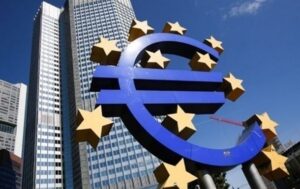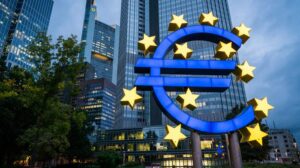
On January 1, 2026, Bulgaria officially switched to the euro and became the 21st country in the eurozone. For the Bulgarian economy, this step is largely institutional in nature: for many years, the lev was tightly pegged to the euro through the currency board, so the market did not expect a sharp change in the monetary regime. At the same time, the country will get a seat on the ECB’s governing bodies and deeper integration into the eurozone’s financial system, according to the Experts Club information and analytical center.
Maksym Urakin, founder of the Experts Club analytical center, believes that the effect of the transition will be determined by how quickly the authorities “knock down” inflation expectations among the population and businesses: “The euro itself does not make the economy richer overnight, but it reduces transaction costs and increases investor confidence. The key test in the first few months will be controlling price speculation and communicating clearly with consumers.”
The main domestic risk around which public debate in Bulgaria is centered is inflationary expectations and fears of price “rounding” in retail and services. Such fears traditionally accompany currency changes, even if the actual effect is usually limited in time and concentrated in the sector of daily household expenses.
After Bulgaria’s entry into the eurozone, six countries remain in the EU that do not use the euro: Sweden, Poland, the Czech Republic, Hungary, Denmark, and Romania.
According to Experts Club estimates, the expansion of the eurozone will be slow in the coming years, as each of these countries has its own “stop factors” — from political constraints to failure to meet convergence criteria and budget deficit problems.
In Poland, for example, the government has publicly stated that the country is “not yet ready” for the euro and considers the zloty to be an instrument of macroeconomic flexibility that has helped it weather past shocks.
In the Czech Republic, President Petr Pavel has called for more active movement towards the euro as a factor in trade and decision-making, but there is no political consensus on the timing in the Czech Republic.
In Hungary, Prime Minister Viktor Orbán, on the contrary, has stated several times that the country should not adopt the euro.
Sweden formally relies on the results of the 2003 referendum, when 55.9% of voters opposed the introduction of the euro.
Denmark, unlike the others, has a legally enshrined right not to introduce the euro (opt-out), confirmed by a referendum in 2000.
Experts Club notes that Romania is considered the next country after Bulgaria that is most likely to apply for the introduction of the euro. However, the actual timeline depends on inflation and the budget trajectory: the European Commission indicated in its convergence materials that Romania does not meet the conditions for adopting the euro, including the parameters of public finance sustainability and legal compatibility. The public guidelines in the Romanian discussion mention a target date of around 2029, but the timing may shift depending on economic indicators and fiscal adjustments.

On January 1, 2026, Bulgaria will adopt the single European currency, the euro.
“This is a historic step for the country and a boon for individuals and businesses in the euro area. The transition will lead to greater economic stability, smoother transactions, and stronger European integration. For Bulgaria, adopting the euro will help to better support long-term economic growth and strengthen its resilience,” according to a statement on the European Central Bank’s website.
The publication notes that “the changes may raise questions and concerns.” “However, the ECB and national authorities are working closely together to ensure a smooth transition for everyone through careful planning and a focus on price stability,” the European Central Bank assures.
Bulgaria is parting with its national currency, the lev, 19 years after joining the European Union. The press in the veteran eurozone countries points out that this will be convenient for tourists and travelers. However, there are concerns in Bulgaria itself, as the ECB acknowledges.
Expectations of benefits are overshadowed by concerns about possible price increases, as seen in Croatia, which joined the eurozone three years ago. These fears are all the more serious given that Bulgaria is one of the poorest countries in the EU.
Nevertheless, the European Commission (EC) considered that this Balkan country, which is becoming the 21st member of the eurozone, has met the relevant criteria: economic stability, public debt below 60% of GDP, and low inflation.
On June 4, 2025, the EC announced its conclusion that Bulgaria was ready to switch to the euro on January 1, 2026.
“Thanks to the euro, Bulgaria’s economy will become stronger, with more trade with eurozone partners, foreign direct investment, access to finance, quality jobs, and real incomes. And Bulgaria will take its rightful place in decision-making within the eurozone,” said EC President Ursula von der Leyen on this occasion.
The EU Council, in turn, announced on July 8, 2025, the approval of the last three legal acts necessary for the introduction of the euro in Bulgaria on January 1, 2026.
“This marks the culmination of a thorough accession process for Bulgaria, which has involved rigorous analysis and intensive preparation,” said Danish Economy Minister Stephanie Lose, who was chairing the EU Council at the time.
“One of the three legal acts sets the exchange rate between the euro and the Bulgarian lev at 1.95583 levs per euro. This corresponds to the current central rate of the lev in the Exchange Rate Mechanism II,” the EU Council said in a statement.
After Bulgaria joins the eurozone, six countries will remain in the EU that do not use this currency: Hungary, Denmark, Poland, Romania, the Czech Republic, and Sweden.
The European Monetary Union, or eurozone, began operating on January 1, 1999, when the single European currency, the euro, was introduced into non-cash circulation. Since March 1, 2002, the euro has been the sole legal tender in the eurozone. Eurozone countries transfer all monetary policy powers to the ECB, including decisions on the amount of money supply and the key interest rate.

In Bulgaria, amid the transition to the euro, some of the population remain concerned about possible price increases and heightened political tensions, according to media reports.
The country will join the eurozone on January 1, 2026, becoming the 21st country to adopt the single European currency.
There are also reports of a protest campaign under the slogan of preserving the Bulgarian lev, and according to Eurobarometer, about 49% of Bulgarians oppose the introduction of the euro.
The article notes that the ECB and European institutions point to the potential benefits of the transition, and the fixed conversion rate is set at 1.95583 leva per euro.
At the same time, according to media reports, the Bulgarian parliament strengthened control mechanisms in the summer to stop unjustified price increases when the currency changes.
Possible scenarios for the rise in the cost of living due to the introduction of the euro: the mildest scenario is a short-term “rounding” effect in retail trade, when some prices are rounded up, which usually contributes slightly and temporarily to inflation.
A more severe scenario is attempts by individual sellers and services to take advantage of the transition period and raise prices more than the conversion dictates, against the backdrop of already noticeable increases in the cost of food and real estate in 2025.
A negative scenario for citizens is if the rise in prices in the consumer basket outpaces the indexation of wages and pensions, real purchasing power will temporarily decline even with a formally small increase in inflation.

Business activity in the euro area at the end of 2025 grew weaker than expected amid a deepening recession in manufacturing and slower growth in the dominant services sector, according to preliminary data from the business activity index (PMI) prepared by HCOB and S&P Global.
According to the assessment, the HCOB Flash Eurozone Composite PMI declined to 51.9 points in December from 52.8 points in November, falling to its lowest level in three months and below the forecast of analysts polled by Reuters. The value above 50 points still indicates an increase in business activity.
The situation in industry continues to drag the index down: the eurozone manufacturing PMI in December fell to 49.2 points, the lowest since April, reflecting the continued decline in output and a steeper new orders slump, the largest since February. Deepening weakness in German industry was cited as the main factor, while France showed cautious signs
In the services sector, business activity is still picking up but the pace is slowing, with the services PMI down to 52.6 points from 53.6 points in November. Meanwhile, companies continue to increase employment, but business optimism fell to its lowest level since May, indicating that businesses are cautious about the outlook for 2026.
According to a Reuters poll of analysts, rising cost pressures and output prices at the end of the year do not change the overall picture: inflation in the eurozone has moved closer to the 2% target on average, and the market in the baseline scenario expects the European Central Bank’s key rates to remain unchanged until at least 2027.

Despite the growing share of the euro in Ukraine’s foreign trade and international reserves, the US dollar remains the exchange rate-forming currency for the hryvnya. This was reported by the first Deputy head of the NBU Sergey Mykolaychuk in an interview with Interfax-Ukraine.
“Historically, the focus has always been on the hryvnia-dollar pair. We realize that changes are possible over time with the deepening of European integration, but there is no clear transition plan. Today the dollar remains the exchange rate-forming currency,” he said.
According to the official, the structure of reserves and settlements may change in the future, however, instruments for hedging currency risks, including forwards, are available for business.

The European Central Bank (ECB) considers the current level of key interest rates to be justified and remains committed to the goal of maintaining inflation in the euro area at 2% in the long term, ECB President Christine Lagarde said.
“Our aspiration, commitment and duty is to ensure price stability, and this corresponds to inflation in the region of 2%,” she said in an interview with the German newspaper ARD. “We have succeeded, inflation is already at 2%, and we will continue to work in this direction.
“We will do everything necessary to ensure that inflation remains at this level,” Lagarde added. “Uncertainty is high, we are surrounded by unpredictability, but there is confidence and stability in terms of prices.
Meanwhile, François Villeroy de Galo, Governor of the Bank of France and member of the ECB Governing Council, warned that the 14% strengthening of the euro since the beginning of the year poses a risk of too low inflation.
In his opinion, a 10% rise in the euro reduces inflation by 0.2 percentage points over the next three years.
“This may increase the risks that inflation will be below our target, and we cannot ignore this,” de Galo said.
Earlier, ECB Vice President Luis de Guindos noted that the rise of the euro/dollar pair above $1.2 could complicate the central bank’s task of achieving the target inflation rate.
The ECB has cut rates eight times over the past year, and now the key deposit rate is 2%. Analysts and market participants generally expect that the regulator will not change rates at the July meeting in order to assess the impact of the measures already taken on the eurozone economy.